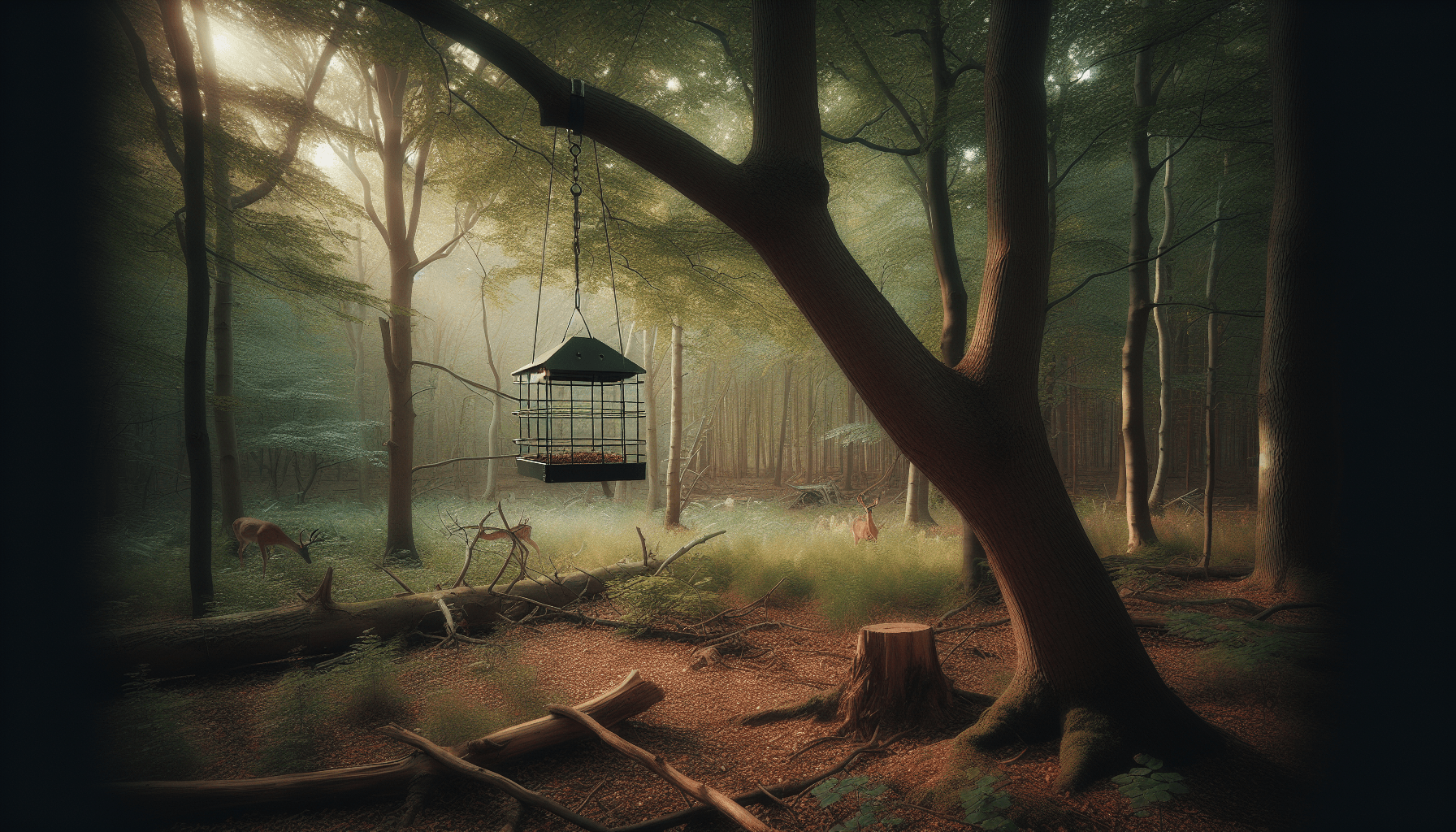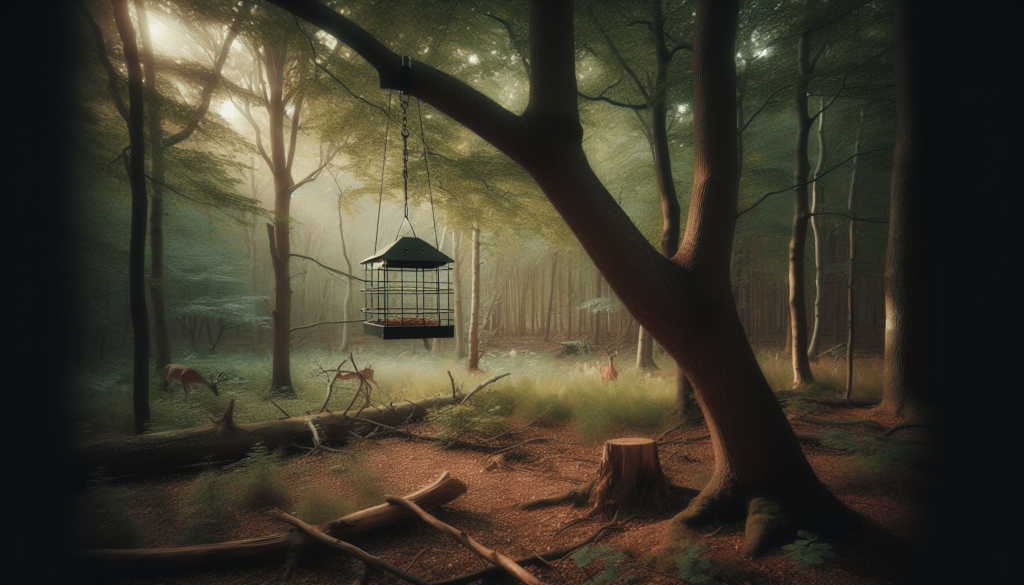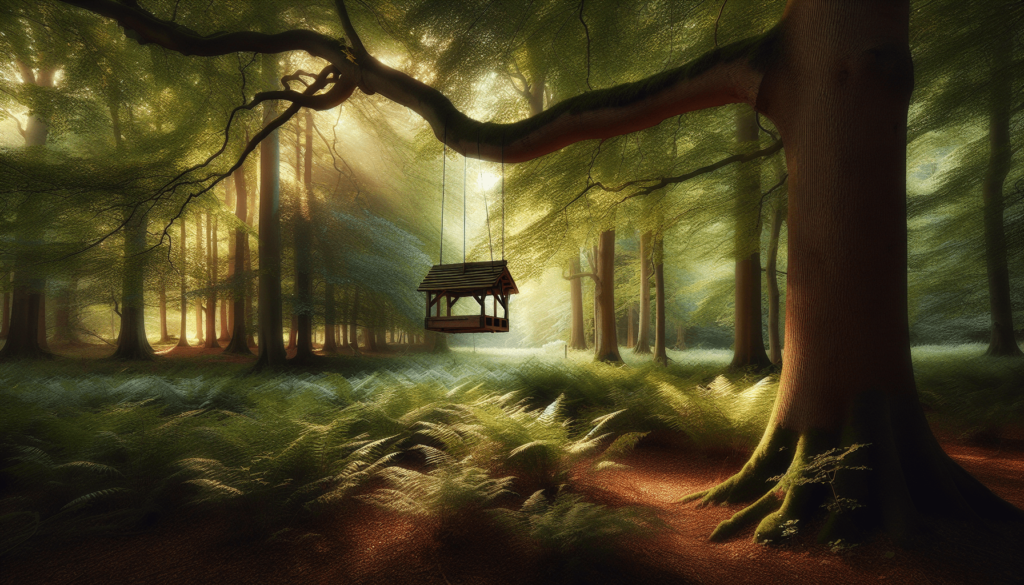
Have you ever wondered what goes into the effective placement of a hanging deer feeder? Understanding the science behind it can significantly increase your chances of attracting deer to your feeding area, making the experience both rewarding and efficient. Whether you’re a seasoned hunter or a wildlife enthusiast, knowing the specifics of placing a deer feeder can make a huge difference. So, let’s unravel the secrets together.
The Importance of Proper Hanging Deer Feeder Placement
The primary goal of placing a hanging deer feeder is to maximize its effectiveness. When done right, it can provide deer with a much-needed source of nutrition and help you observe and study their behavior. Correct placement involves a combination of understanding deer habits, environmental factors, and feeder mechanics.
Enhancing Deer Nutrition
Hanging deer feeders from reputable brands like Moultrie, American Hunter, and WILDGAME INNOVATIONS, play a critical role in supplementing deer diets, especially during winter when natural food sources become scarce. Achieving this requires thoughtful placement to ensure deer find their way to the feeder.
Maximizing Observation Opportunities
Correct placement allows you to observe deer in their natural behavior patterns undisturbed. This can be crucial for both wildlife watchers and hunters who want to understand deer movement and habits.
Understanding Deer Behavior and Patterns
To place a deer feeder effectively, you need to comprehend deer behavior and movement. Deer are creatures of habit, often following the same trails and visiting the same feeding spots.
Seasonal Movements
Deer behavior changes with seasons. In spring and summer, deer are more likely to be found in areas abundant with natural food sources. During fall and winter, when these sources deplete, they’ll be more inclined to visit your feeder.
Time of Day
Deer are crepuscular animals, meaning they are most active during dawn and dusk. Placing feeders in areas that can be accessed during these times will increase the likelihood of deer visits.
Safety and Security
Deer are naturally skittish and will avoid areas they perceive as dangerous. Therefore, settling your feeder in a quiet, low-traffic area, away from human activity, is critical.

Selecting the Right Location for Your Feeder
Several factors come into play when picking the ideal location for your deer feeder. These include terrain, proximity to water sources, and cover.
Terrain
Choose a relatively flat area for your feeder. Steep or uneven terrain can make it difficult for deer to access the feeder comfortably. A flat expanse also allows for better monitoring and easier refilling of the feeder.
Proximity to Water Sources
Water is a crucial element for deer survival. Placing feeders near a natural water source can help attract more deer, as they are likely to visit these areas regularly.
Cover
Deer prefer areas that provide some cover. This makes them feel secure and reduces the risk of predation. Positioning your feeder near forest edges or small clusters of trees can help attract more deer.
Environmental Factors to Consider
Wind Direction
Always consider the wind direction when placing your feeder. Deer use their sense of smell to detect danger, so minimize your scent’s impact by setting the feeder downwind of where you plan to observe.
Weather Conditions
Weather conditions can influence deer feeding patterns. During harsh winters, feeders become critical, whereas during mild weather, deer might not depend on supplemental feed as much.

Technology and Tools for Effective Placement
Leveraging the right tools and technology can help in the effective placement of hanging deer feeders. From advanced feeder designs to specialized equipment, making informed choices is key.
Advanced Feeder Designs
Brands like SolutionsPatIQ, Highwild, and Boss Buck offer feeders with design features that enhance effectiveness. For instance, feeders with timers regulate feeding times, ensuring food availability when deer are most active.
Utilizing Trail Cameras
Trail cameras can be invaluable for monitoring feeder activity. Placing trail cameras nearby can give you insight into when deer visit and how many are coming. This helps in making any necessary adjustments to feeder placement.
GPS and Mapping
Modern mapping tools and GPS can help you select the best location by studying terrain and identifying patterns in deer movement. This tech can simplify the otherwise tedious process of scouting and relocating feeders.
Maintenance and Regular Monitoring
Once placed, maintaining and monitoring your deer feeder is crucial to its continual success. It ensures that the feeder remains attractive to deer and operates efficiently.
Feeding Schedule
Establishing a consistent feeding schedule is vital. Deer can become accustomed to feeding times, increasing the likelihood of regular visits. Most high-end feeders from brands like On Time Wildlife Feeders and Keilyn offer programmable timers to help maintain a feeding schedule.
Regular Checks and Refills
Checking your feeder regularly for any issues and keeping it filled is important. Depending on the feeder type and the deer population, weekly or bi-weekly visits might be necessary.
Hygiene and Cleanliness
Keeping the feeder clean prevents the spread of diseases and ensures the feed remains fresh and attractive to deer. Regular maintenance helps in prolonging the feeder’s lifespan.
Ethical Considerations and Wildlife Conservation
When placing and using deer feeders, ethical considerations and wildlife conservation must be at the forefront.
Balancing Feeding and Hunting
Using feeders for hunting purposes should be balanced with the ethical treatment of wildlife. Following local regulations and best practices can ensure that your activities are both ethical and legal.
Promoting Healthy Deer Populations
Feeders should supplement natural food sources, not replace them. Maintaining a balance helps promote healthy deer populations without causing dependency on human-provided feed.
Sustainability Practices
Choose sustainable feeding practices such as using non-GMO feeds and ensuring that the feed does not harm the environment. Brands like Gravity Fed and Andee often emphasize eco-friendly options, aligning with conservation efforts.
Troubleshooting Common Problems
Even with the best practices, issues with deer feeders can arise. Here’s how you can troubleshoot common problems.
Feeder Not Attracting Deer
If your feeder is not attracting deer, consider relocating it to a more frequented area. Using trail cameras can help identify better spots. Also, check the type of feed; some might be less appealing to deer.
Feeder Malfunctions
Keep an eye out for any mechanical issues with your feeder. Regularly inspecting and maintaining your feeder can prevent malfunctions. Reading the manuals and using quality brands like KUMFJ can reduce the chances of technical problems.
Predators and Pest Control
Predators and pests can deter deer from visiting your feeder. Implementing deterrents or using specially designed feeders that discourage non-deer wildlife can help. Elevated or hanging feeders often reduce such issues.
Conclusion
Understanding the science behind effective hanging deer feeder placement can transform your wildlife feeding and observation experience. By comprehending deer behavior, selecting the right location, leveraging technology, and ensuring ethical practices, you can maximize the success of your deer feeding efforts. Remember, the goal is to enhance the deer’s habitat and your opportunity to connect with nature, creating a harmonious and sustainable environment for all involved.



